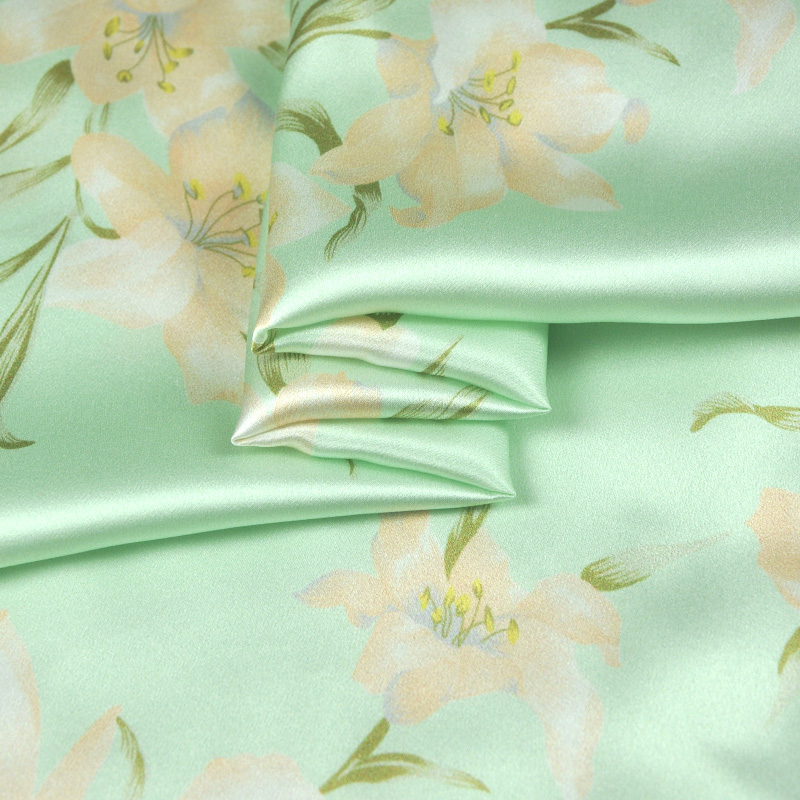In the “clothing, food, housing and transportation” ranked first in the “clothing.” The human “garment industry” has been developed for thousands of years, and the topic of ecological protection has become the focus of all mankind in the last 10 years. People’s requirements for fabrics are no longer so simple to wear. How to be eco-friendly and comfortable, the entire fabric industry is working hard.
Below, we take stock of ten kinds of textile fabrics that are common in people’s daily life, so that you can further understand your “second skin.”
FUR
This is the earliest fabric that humans have begun to use. Please imagine the caverns of the cavemen.
The main component of animal fur is protein. The most common ones are sheep, rabbits, dogs, etc. The more expensive ones are foxes and raccoons. They are commonly used as materials for coats and scarves. They have the advantages of good elasticity, strong hygroscopicity and good warmth.
Take the widest range of wool, for example, the wool on a sheep is called “wool”, and only the hair on a goat is called “cashmere.” (Cashmere is a thin layer of fine velvet that grows on the outer layer of the goat’s hair. It grows out in the cold winter, resists the cold, and falls off after the spring turns warm. It adapts naturally to the climate and is a rare special animal fiber. Its warmth is 1.5 times to 2 times that of wool).
SILK
Silk is a special product of China, and its development is accompanied by China’s history of more than 5,000 years. Legend has it that Huang Di’s wife, Lei Zu, invented “sericulture to take silk”. In the Western Han Dynasty, Zhang Wei traveled the Western countries and opened the famous “Silk Road”. China is also known as the “Silk Country”.
The advantage of silk is that it is soft, smooth, lighter and has a good gloss. It is a good choice for noble and elegant women. Its shortcoming is that it is easy to produce wrinkles, easy to adsorb on the body, not strong enough, easy to fade, and expensive!
LINEN
As early as in the ancient Egyptian era, there was artificial cultivation of linen.
Linen is a kind of plant fiber, which is known as cool and noble fiber. It is not easy to generate static electricity, dissipates heat quickly, does not fit after sweating, and is more resistant to washing.
However, linen fabrics are very lacking in aesthetics.
COTTON
Cotton planting first appeared in the Indus Valley civilization from 5,000 to 4,000 BC and was later introduced to Europe. Europeans obtained wool from sheep. At first they thought that cotton came from a special kind of sheep. This kind of sheep grew out of the tree, so the direct translation of cotton in German is “tree wool.”
Cotton-based fabrics are comfortable, soft and breathable, making them the first choice for people in their daily lives. However, the shortcomings of cotton are also big: it is too easy to shrink, wrinkle, and it is the most difficult to dry TOP material.
NYLON
First lanunched in 1938.
Polyurethane fiber (PA), commonly known as nylon, is also known as nylon. Strong, waterproof and windproof, it is the “wearing duty” of the fabric industry. However, the impermeability of nylon blocks the breathing of people’s skin. In addition to overalls, it is difficult to enter people’s normal life.
Viscose fiber
Viscose is one of the old fiber varieties. It sounds like a man-made fiber, but it is not. In 1891, Cross and others first made a solution of sodium cellulose sulfonate from cotton. Because of the high viscosity of this solution, it was named “viscose”. After the viscose is in contact with the acid, the cellulose is re-precipitated. Therefore, the name of the viscose fiber is the state of the intermediate product of its process.
The viscose fiber is a cellulose fiber obtained by extracting and reshaping from natural wood cellulose using wood as a raw material. They are known by the names: ice silk, silk cotton, modal and so on. This fiber has the essence of cotton. The quality of silk and hygroscopicity fully meet the physiological needs of the skin: smooth, cool, breathable, antistatic and UV resistant.
LEATHER
The original leather refers to the non-perishable fabric obtained by the process of tanning and the like, which has natural grain and luster and is comfortable to the touch. Compared with fur, leather is lighter and warmer, and it is more luxurious and widely used in fashion and high-end furniture. The disadvantage is that the leather is not only expensive, but also the maintenance is too complicated: the wiping method should be gentle, can not be stained with oil, can not be contaminated with chemical reagents, can not be folded, and waxed regularly.
Polyester
First lanunched in 1941.
Polyester fiber (PET), commonly known as polyester. It does not shrink, easy to dry is its advantage, but easy to pilling, static electricity, etc. is its obvious shortcomings. But now, through some safe chemical additives, these problems can be effectively solved, so polyester is now widely accepted in home textiles, fabrics and other industries.
Spandex
First lanunched in 1937.
Polyurethane fiber (PU), commonly known as “spandex”, is also known as “Leica”. Spandex is highly elastic, smooth in hand and machine washable. It is generally not used alone, but is incorporated into fabrics in small amounts, and the ratio used in general clothing is relatively small. Instead, it is specialized in training suits, workout clothes, surgical protective suits, etc. The main force of clothing.
Acrylic
First lanunched in 1931.
Polypropylene (PAN), commonly known as “acrylic”, also known as “artificial wool”. It is soft, warm, flat, compact, not easy to deform, and has minimal shrinkage after washing. It is especially suitable for autumn and winter coats. And the color can be made particularly beautiful & shinning.


